My Favourite Thai-inspired Vegetable Curry
Since I last posted a lot of things have happened in my life. The first and most important one was my recent move from Porto to Glasgow. Between preparing and planning all the stuff that involves moving into a different country, I barely had time to cook, let alone blog. However, and now that I’ve been here for a month and got (almost) everything sorted out (housing, burocracy and the likes), I´m happy to resume blogging and do the very best I can to bring you my favourite vegan recipes.
I’ve been thinking a lot about how things will naturally change around here (in terms of photography and recipe content as well) since I’m not in my own kitchen and do not have all the kitchen tools I’m used to. This will naturally affect the kind of recipes I’ll be posting from now on – they will be simpler, and since I do not own a food scale, lack the accuracy I’d like them to have. However, I do prefer to face this as a challenge (and one that I’m happy to take) rather than a limitation. I came to Glasgow with a 20 kg suitcase. I brought mostly clothes, one book, my laptop and my camera. I left in Porto all my cookbooks and the boards, plates and cutlery that have helped me build this blog’s photography identity over time. I’m already missing my bedroom’s blue wall, the wall that was the background of most of the food pictures I posted here for the last 5 years. But I’m also a firm believer that things happen for a reason. I was probably getting too comfortable with my own style of doing things, and this an opportunity to question that and try new and fresh approaches.
So, let’s talk curry today. I didn’t bring any of my cookbooks with me, but if I could only bring one, I’d definitely go with The Millenium Cookbook. Most of the recipes I cooked from this book were outstanding, and a great number of them have become part of my cooking repertoire. That’s the case with this curry. The original recipe is more labour intensive, and in order to make it simpler and faster I omitted some steps, trying not to compromise too much on the flavour. The recipe might still seem a bit of a project though, but I can guarantee you it’s worth making your own curry “base” from scratch, blending the sauce, and so on. In the end, you’ll have a fantastic curry that feeds a crowd and is definitely a crowd pleaser too. If you can’t come across butternut squash this time of the year, use carrots instead (4 or 5 large ones will do) – I’ve done it before and it works just as well. Also feel free to play around with the vegetables – in the past I’ve tried green beans, broccoli and asparagus and all of them have worked nicely. Hope you enjoy the curry and I’ll be back soon! In the meantime, check my instagram feed for food-related pictures and some suburb memorabilia from Glasgow.
My favourite Thai-inspired Vegetable Curry
Recipe inspired by The Millenium Cookbook
(serves 6, as a main)
*note: I usually use two green chillies with seeds, but I can handle quite a lot of heat. If you’re less tolerable than me, use only one.
For the curry sauce:
2 medium sized onions, chopped
5 large garlic cloves, chopped
1 piece of ginger the size of your thumb, peeled and grated
1 small bunch of coriander
1 teaspoon coriander powder
½ teaspoon turmeric powder
1 teaspoon cumin powder
1 teaspoon sea salt
zest of 2 limes
juice of 2 ½ limes
2 green chillies, finely chopped* (see note above)
1 medium sized butternut squash, peeled, seeded and chopped into cubes
1 can / 400 ml full fat coconut milk
For the curry:
1 Tablespoon coconut oil, melted
1 large sweet potato, peeled and chopped into cubes
1 large carrot, peepled and chopped into cubes
1 small head of cauliflower, cut into medium-sized florets
1 small head of cabbage, thinly sliced
1 lemongrass stalk, tough outer layer removed, bruised in a mortar and pestle (optional)
1 cup / 250 ml water
250 g / 1 package smoked tofu, cubed
For serving:
3-4 spring onions, finely chopped
1 handful of peanuts, toasted
extra coriander, finely chopped
1-2 limes, cut into quarters
For the curry sauce: In a double boiler, steam about ¾ of the butternut squash for 5 to 8 minutes, or until thoroughly cooked. In a high speed blender combine the chopped onions, garlic, ginger, fresh coriander, spices (coriander, cumin and turmeric powders), salt, lime zest and juice, chilies and the coconut milk and blitz until you have a smooth sauce. Working in batches, add the cooked butternut squash to the mixture and blitz until creamy.
For the curry: In a large pot over medium heat, add the coconut oil, the carrot, sweet potato and the remaining ¼ of butternut squash. Sautée for a few minutes or until the vegetables are golden brown. Add the curry sauce followed by the bruised lemongrass stalk (if using) and 1 cup / 250 ml of water and bring to a boil. Once boiling, decrease the heat to low-medium and simmer for 10 minutes. After that time, add the cauliflower, cabbage and smoked tofu and simmer for 5 minutes longer. If the sauce seems too thick, add a bit more water to thin it out to the consistency you like (I like mine to resemble a smooth blended soup). Season with extra salt and serve with the chopped peanuts, scallions, coriander and a good squeeze of lime juice.
Springtime Vegan Frittata
As much as I love my morning bowl of oatmeal, it feels good to have something different for breakfast every now and then. Lately, I’ve been trying different breakfast foods – from salads, to socca, and steamed vegetables with panfried tofu – and while I enjoyed them all, the recipe I’m sharing with today is one of my favourite experiments.
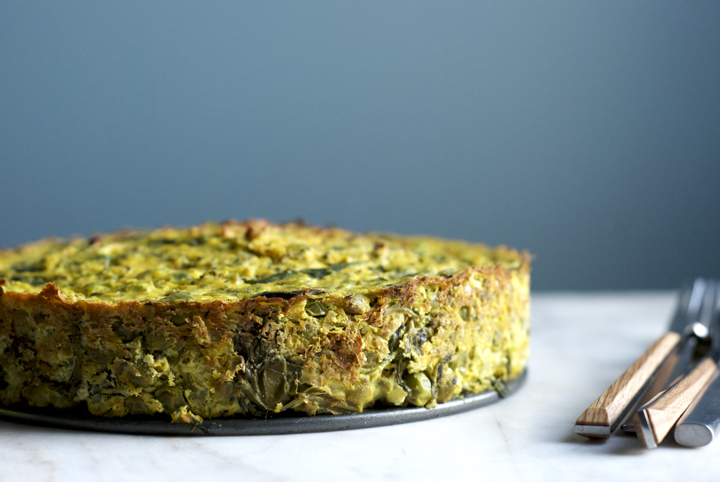
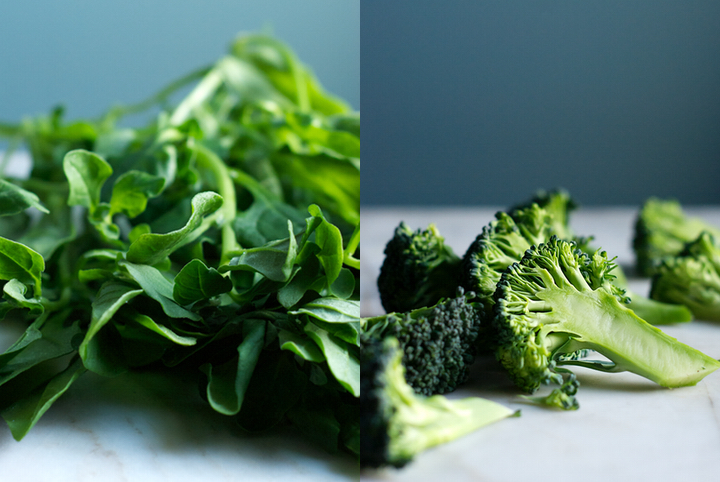 Before I committed to making my version of a vegan frittata, I’ve searched the web for inspiration. Most of the recipes I saw called for the use of cornstarch or arrowroot to thicken the tofu “custard” and make it firmer. I have nothing against those ingredients, but since I had neither of them at home by the time I was making the frittata, I made it without them and it turned out just fine. However, if you want to be able to cut a perfect slice out of it you have to be patient and wait at least half an hour after it comes out of the oven.
Before I committed to making my version of a vegan frittata, I’ve searched the web for inspiration. Most of the recipes I saw called for the use of cornstarch or arrowroot to thicken the tofu “custard” and make it firmer. I have nothing against those ingredients, but since I had neither of them at home by the time I was making the frittata, I made it without them and it turned out just fine. However, if you want to be able to cut a perfect slice out of it you have to be patient and wait at least half an hour after it comes out of the oven.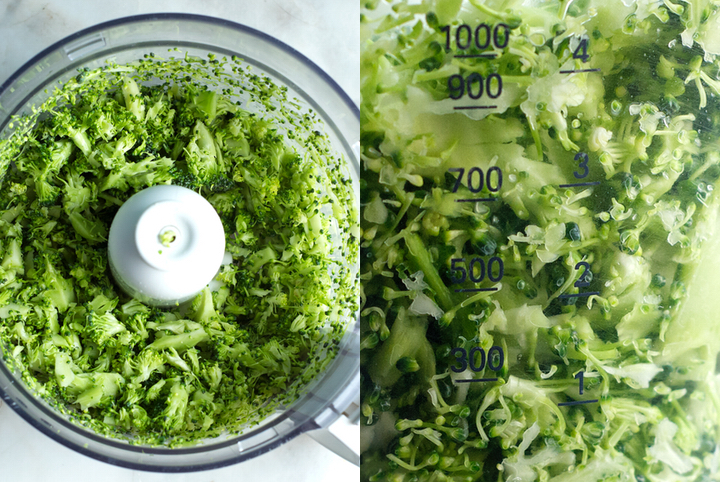
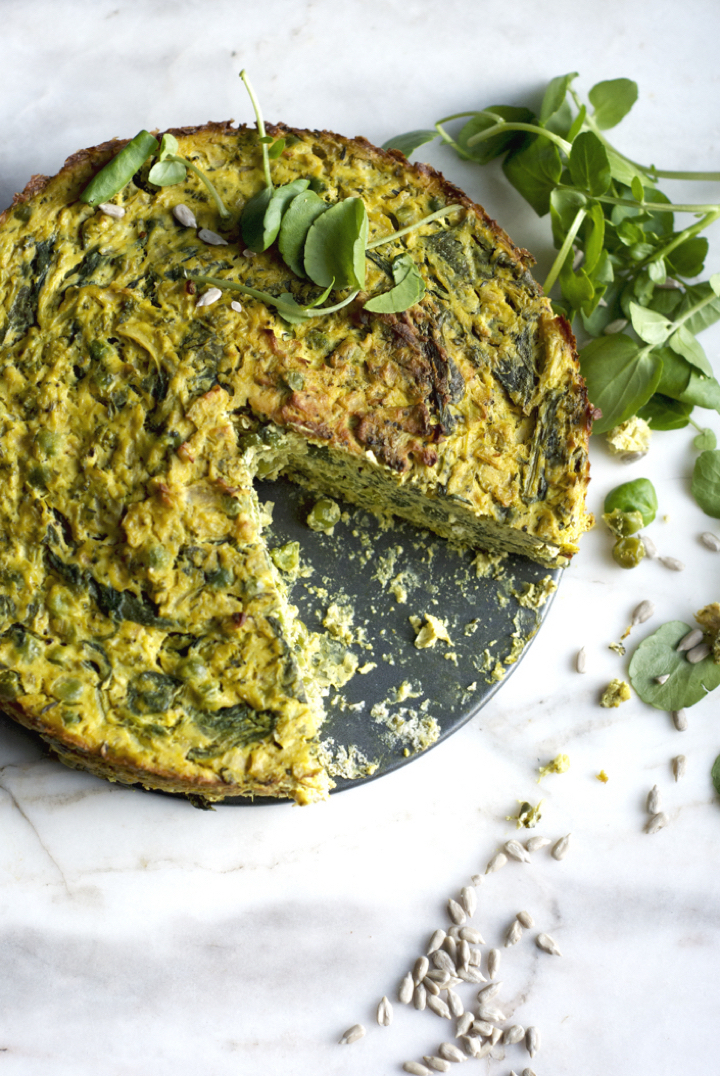
The frittata also becomes firmer the longer it stays in the fridge, and I might say I actually like it better the day after it’s baked – it’s incredible how the flavours improve and become more pronounced overnight. You don’t really need to use the vegetables I used here, and I’m sure that red peppers and/or leeks would be great additions or substitutions.
Springtime Vegan Frittata
serves 6 to 8
Ingredients
250 g / 1 large onion, finely cubed
4 garlic cloves, minced
2 Tablespoons olive oil
1 teaspoon dried thyme
2 teaspoons sea salt, divided
690 g fresh firm tofu, cubed
1 teaspoon ground turmeric
2 Tablespoons brewer’s yeast (optional)
grated zest of one lemon
220 g / 1 small broccoli head, cut into medium sized florets
295 g / 1 large bunch spinach
240 g boiled peas (frozen is fine)
freshly ground black pepper to taste
Pre-heat the oven to 180C. Grease a springform pan with oil and set aside.
In a large skillet over medium-high heat, add the onion, garlic, olive oil and dried thyme. Cook, stirring often, for 5-8 minutes, or until the onion has softened and browned just a bit.
Add the broccoli florets to the bowl of a food processor and pulse 3 to 4 times, or until the florets are just broken down (you don’t want to fully blitz the broccoli).
Add the broccoli to the skillet with the onion and garlic mixture and cook for 3 minutes, stirring often. Next, add the spinach and 1 teaspoon of salt and cook until the spinach is wilted – no longer than 2 minutes.
Add the tofu to the bowl of the food processor, along with 1 teaspoon of salt, the turmeric, brewer’s yeast (if using) and lemon zest, and blitz until smooth.
Add the spinach and broccoli mixture to a large bowl, followed by the puréed tofu and the cooked peas. Gently mix the ingredients until everything is well incorporated. Season with freshly ground black pepper and an extra pinch of salt, if necessary.
Add the frittata mixture to the prepared springform pan. Smooth the top with the back of a spoon and bake in the oven for 40-45 minutes or until golden brown. Let it cool in the pan before unmolding and serving.
Soba Noodle Bowl with Kimchi and Satay Sauce
One quality I highly admire in people is their ability and willingness to try new or “different-than-usual” foods. While some people sometimes seem to be afraid of new tasting experiences (I know quite a few), others dig into new dishes without blinking an eye and just for the sake of curiosity.
I guess Luís fits into the latter category. The other day I was all excited with my first attempt at making kimchi and, to my surprise, he seemed to like it. He compared it to wasabi, which at first might sound odd, but thinking of it I realized those two foods share the same kind of fresh and invigorating spiciness.
Even though the instructions for this recipe (particularly the kimchi) seem to be long, this is a dish that is really easy to put together. The peanut satay calls for ingredients you probably have in the fridge already, and you can use tahini or almonds in the place of the peanuts if you feel like it. As far the as vegetables go, use what you have on hand, really: spring onions, raw turnips’ or carrots’ batons and assorted greens can definitely replace the ones I call for in here.
Now, onto the kimchi: I highly encourage you to make your own kimchi and start digging into the fermentation topic a bit – this is a wonderfully written book on that, by the way –, as it’s fascinating how the action of time imparts such a peculiar tangy sourness to vegetables. You might get addicted along the way and, if you’re like me, start fermenting everything in sight. At this moment, I have a jar filled with (almost soured) beets and another one with cabbage, which will soon turn into (hopefully) delicious sauerkraut.
Soba Noodle Bowl with Kimchi and Satay Sauce
(serves 2-3, as a main)
160 gr soba noodles
6 to 8 radishes, thinly sliced
3-4 button mushrooms, thinly sliced
200g pan fried tofu, cubed
plenty of green leaves (I used baby rocket)
1-2 tablespoons fresh coriander, finely chopped
kimchi (recipe follows – as much or less as you want)
for the satay sauce
60 gr / 1/3 cup unsalted peanuts
80 ml / 1/3 cup plus 2 tablespoons coconut milk
juice of one medium-large lemon
¼ teaspoon salt
¼ teaspoon red chili flakes
1 teaspoon soy sauce
15 gr fresh ginger, finely grated
1 small coriander bunch / about 12 gr finely chopped
for the kimchi
1 kg / one very large chinese or napa cabbage, coarsely chopped
6 large garlic cloves
3-4 tablespoons fresh ginger, finely grated
3 red chilis, finely chopped
1 large leek, finely sliced
8 cups water
8 tablespoons sea salt
To make the satay sauce: in a pan over low-medium heat, toast the peanuts until they’re golden brown (3-4 minutes). In a mortar and pestle, mash the peanuts and the salt together. I like my satay fairly chunky, so I don’t mash the peanuts until they come to a paste – I leave some of them broken down for a bit of texture.
Transfer the peanut and salt mixture to a bowl. Add all the remaining ingredients and whisk everything together until you get a creamy sauce. Have a taste and adjust the seasoning, adding more salt if needed be.
In the meantime, bring a large pan with plenty of salted water to a boil. Once boiling, add the noodles and cook them for 6-7 minutes. Drain and set aside.
To make the kimchi: In a large non-reactive bowl, mix the water and the salt. Whisk for a minute or two or until the salt is dissolved. Add the cabbage to the bowl and make sure it’s covered by the salted water (brine). Let it sit in the fridge overnight.
The next day, drain the cabbage and reserve some of the brine (1 or 2 cups should be enough). If it’s too salty, wash the cabbage under cold water, rinse and drain again. If it’s not, simply drain it.
Mash the garlic cloves, ginger and chilli into a mortar and pestle. Rub this paste into the cabbage. Add the chopped leek to the mixture and pack everything together into a clean 1 liter jar. With your clean fingers, press the cabbage down into the jar so that it releases some of the brine. Make sure the cabbage is submerged in the brine (it should be 1 cm above the cabbage). If it’s not, add back some of the brine you previously reserved. Cover the kimchi with another jar, slightly smaller than the one you’re using, filled with water or beans to press the cabbage down. Check your kimchi every day and, with your clean fingers, press it down a little bit each time, always making sure it’s covered by the brine. After a week or so, it’s ready to be eaten and you can store it in the fridge, where it will continue to ferment but at a much slower pace.
To assemble: add to each bowl a fairly good amount of soba noodles, and top them with plenty of sauce (1-2 tablespoons per person or as much as you want). Add the raw vegetables (radishes, mushrooms and greens), the pan fried tofu and, finally, the kimchi (I add about 2 tablespoons per bowl).
The Kimchi recipe is lightly adapted from the book “Wild Fermentation” (2003), by Sandor Ellix Katz
Roasted Shallots and Cherry Tomatoes Pie
This pie recipe I’m about to share with today was made upon my mother’s request for a savory pie. My mom is an undeniable sweet tooth and most of the things she asks me to cook are cookies and desserts, but this time around she was up - to my relief - to something different. I’ve been facing days in which my motivation/inspiration to cook has been reduced to a minimum (I think we all have experienced the feeling that, for some unknown reason, we cannot simply come up with new interesting ideas - not only in the culinary realm, but also in any other area) so I really took and followed her guidelines: she wanted a pie with roasted onions or shallots on it, and that was what I made. Actually, I’ve realized this is a good method to pike up your creativity: ask somebody what he/she wants you to cook for them, and you’ll probably come up not only with what they wanted, but also with your own interpretation of what they asked you make - and that’s what makes the new born recipe special and therefore unique in its own way. Another way to re-start feeling inspired to cook - at least for me - is to watch other people cooking: I went to a barbecue party this weekend, and by watching one of my friends making a delicious and dead easy flatbread recipe from scratch, I immediately knew I had to try it at home with my own tweaks and variations (I’ll post up the recipe here soon).
This particular recipe relies on the well-known technique used in non-dairy and eggless pies, which is to make a “tofu custard” (and season it with a few dried herbs and condiments), that will then set when cooked in the oven, similarly to any other savory custard made of eggs and cream.
These days, I’ve been also addicted to experiment with different types of flour, and this time around, while searching the cupboards for buckwheat and oat flours (which I was planning to use in here), I found chestnut flour and that was what I used to make the crust. Chestnut flour has a sweet and somehow dense flavor, and because it’s gluten-free, I think it’s easier to work with when it’s combined with wheat (either whole wheat or just regular) flours - if you don’t have chestnut flour at hand, feel free to make this pie crust using only the white whole-wheat type instead.
I owe my mother the inspiration for this pie recipe so, as a sort of tribute, the leading picture of this post shows myself - as a little child – and her back in the early 90’s. : )
Roasted Shallots and Cherry Tomatoes Pie
(makes one, 20-22 cm tart)
For the pie crust:
140 grams (1 cup) chestnut flour
130 grams (1 cup) white whole-wheat flour
80 ml (1/3 cup) olive oil
60 ml (1/4 cup) plus 2 to 3 tablespoons cold water
½ teaspoon salt
For the roasted vegetables:
250 grams (1 ½ cups) cherry tomatoes, cut in half crosswise
1 teaspoon muscovado sugar
250 grams (2 cups) small shallots, peeled and cut in half crosswise
4 large garlic cloves, left whole and unpeeled
1 tablespoon balsamic vinegar
a pinch of salt
olive oil
For the tofu custard:
500 grams (1/2 pound) firm tofu, patted dry and crumbled
2 tablespoons lemon juice
2 tablespoons tamari
1 tablespoon balsamic vinegar
2 tablespoons fresh lemon-thyme, minced
1. Pre-heat the oven to 200ºC. Lightly oil 2 baking dishes with olive oil. Mix the onions with 1 tablespoon balsamic vinegar and a pinch of salt. In one of the dishes, place the onions, cut side up, and the garlic cloves, and drizzle a little olive oil over them. Separately, mix the tomatoes with 1 teaspoon muscavado sugar and a little olive oil. Distribute them evenly on the other baking dish. Place the 2 baking dishes in the oven – preferably in the middle rack – and roast for 25 minutes, or until the vegetables are golden brown. When they’re done, take them out from the oven and let them cool a bit at room temperature.
2. In the meantime, prepare the crust: Mix the chesnut and wheat flours in a bowl. Add the salt. Now, slowly pour the olive oil and mix everything with a rubber spatula. Finally, add the water. Using your hands, mix the ingredients together in order to form a ball, being careful not to overmix the dough. If the dough seems too dry and doesn’t hold together, add 1 to 2 tablespoons more water.
3. Place the dough in the lightly oiled tart pan and press it with your fingers, so that the bottom and the sides of the pan are uniformly covered with dough. Now, trim any excess dough. Cover the pan with plastic wrap and refrigerate it while you proceed with the recipe.
4. For the tofu custard, place all the ingredients for the custard in a food processor, as well as half of the roasted cherry tomatoes (juices included) and the roasted garlic cloves (which you have to unpeel first), and process until totally smooth. Have a taste and adjust the seasonings – adding a bit more tamari and/or a bit more lemon juice – if needed.
5. Take tart pan out of the refrigerator, cover it with foil and place a few pie weights over it – I used dried beans. Blind bake the crust for 10 to 12 minutes, or until golden brown.
6. Place the onions in the bottom of the pre-baked tart shell. Fill the latter with the tofu custard and distribute the remaining roasted cherry tomatoes evenly on top. Bake for 25 to 30 minutes, at 180ºC, or until the custard is set and golden brown. Serve with a leafy salad.
Herbed Tofu Cakes with Curried Apple
Lately, I’ve been eating lots of roasted vegetables and bakes, mostly because they are comfort food at their best and have that sort of magical effect of keeping me warm. Also, these are usually dishes that are made in one single pan, meaning there’s minimal work involved in dish washing after dinner, which is also a great advantage. I tell you what I do: often, I make a lentil/vegetable pie and make sure there are enough leftovers for me to enjoy for a couple more meals. Not having that much time to cook lately, this is a method that allows me to have homemade food at hand almost everyday. Anyway, there are also times when I manage to prepare dishes that are done in less than twenty minutes, require minimal effort, are packed with proteins, and taste good. These Herbed Tofu Cakes are one of those no-recipes that I tend to prepare when I don’t feel that much like cooking.
I grab the herbs I have on the refrigerator – this time around, lemon thyme, rosemary and chives were what I had on hand, but you could use any others of your liking -, some tofu and a couple other ingredients, and the cakes are done in no time. The curried apples are a great topping for these protein-packed patties, but you could replace it for some chutney or a simple salsa made with fresh vegetables – they’d be equally good options. To finish things off, serve the dish along with some cooked grains (I can’t get enough of basmati rice cooked with a couple spices such as cinnamon, cloves and cardamom), and there you go.
Herbed Tofu Cakes with Curried Apple
(makes 5 cakes)
for the tofu cakes:
370 grams firm tofu, drained, pat dry and crumbled
1 ½ tablespoons shoyu
1 tablespoon vegan mayo
2 teaspoons dijon mustard
2 tablespoons flaxseed meal
1 ½ tablespoons lemon thyme, finely chopped
1 ½ tablespoons chives, finely chopped
2 teaspoons rosemary, finely chopped
zest of one lemon
2 tablespoons olive oil
for the curried apple:
1 large apple, peeled, cored and thinly sliced
½ teaspoon curry powder
¼ teaspoon sugar
a pinch of salt
a good squeeze of lemon juice
1 tablespoon olive oil
chopped coriander, for garnishing
1. In a large bowl, mix all the ingredients for the tofu cakes, except the olive oil. Mix well until thoroughly combined.
2. Divide the mixture into 4 to 5 equal portions. With your hands, shape each portion into patties.
3. Heat 2 tablespoons of olive oil in a large frying pan, over medium-heat. Shallow-fry the patties for 2 to 3 minutes on each side, or until golden brown.
4. Once the tofu cakes are done, transfer them to a plate and keep them warm in the oven. Heat 1 tablespoon of olive oil in the same frying pan you used for cooking the cakes and, once hot - but not smoking - add the apple slices, sugar, salt and curry powder.
5. Cook for 5 minutes or until the apple slices are tender and slightly caramelized. Turn off the heat and add a good squeeze of lemon juice to the pan.
6. Serve the tofu cakes with the curried apple slices on top, and garnish each serving with plenty chopped coriander. Serve with basmati rice or any other grain of your liking.
Spicy Tofu with Peas and Mint
My week has been really busy, and all I’ve been eating lately is kind of boring and predictable stuff (basically, lots of sandwiches and soup). So today, I finally gave myself some time to go into the kitchen and prepare a proper lunch. That lunch – for which the recipe follows – relies on a favorite combination of mine: peas and mint. As far as the preparation time goes, this is the kind of dish that will only take you a couple minutes to make, but even so, you can certainly prepare the tofu and rub the spices onto it and left the whole thing in the refrigerator until you start cooking.
Typically, I’d serve this along with some raita (with all natural, unsweetened, soy yogurt, grated cucumber, and good pinch of salt), but today, after an hour running, I was craving a more satisfying meal and made, instead, some buckwheat pancakes to go with it. I often like my tofu the simple (and easy) way - coated in a little olive oil, sprinkled with sea salt, and therefore grilled until golden brown - but rubbing a spice mix into it before grilling/frying, might be a new favorite method. Actually, as I type this, I can’t help myself but thinking on variations to the mixture of spices suggested below: feel free to add curry powder for a more indian scented flavor, or even going a completely different way, by substiting the cumin, ginger, paprika and turmeric, for dried herbs such as rosemary, thyme and oregano.
Spicy tofu with peas and mint
(serves 4)
400 grams extra firm tofu, rinsed, pat dry, and cubbed
450 grams frozen peas
1 teaspoon powdered garlic
2 teaspoons ground cumin
¼ teaspoon black pepper
1 teaspoon ground powdered ginger
½ teaspoon turmeric
1 tablespoon paprika
2 ½ tablespoons lemon juice
1 ½ tablespoons tamari
a few fresh mint leaves, finely chopped
2 tablespoons olive oil
1. Combine the garlic, cumin, black pepper, ginger, turmeric and paprika in a large bowl. Add the lemon juice and tamari and mix well.
2. Rub the spice mixture into the tofu cubes, making sure they’re all well coated. Set aside.
3. Bring enough salted water to a boil, add the peas, and cook for 3 to 4 minutes. Drain the peas, wash them under cold running water and drain again.
4. In a large frying pan over medium-high heat, add the olive oil. Once hot, but not smoking, add the tofu cubes and fry for 6 to 8 minutes, or until golden brown.
5. Transfer the peas and tofu to a large serving plate, and garnish with fresh mint. Serve immediately.
recipe inspired by Rose Elliot’s The Vegetarian Supercook, published by octopus Publishing Group in 2006
Broccoli and Pine Nut Tart
On sunday afternoons, I like to give myself plenty of time to do whatever I want. Usually, that involves napping right after lunch. But yesterday, after some failed attempts at napping, I’ve decided to go to the kitchen and focus on a culinary project, one that would take some time, to keep me occupied until dinner time. And so I’ve made a tart. A delicious one. Perhaps one of the best vegan tarts I’ve ever had. Usually, savory tarts call for buttery crusts and rich custards made out of eggs and cream, but this one, not having any of those ingredients, packed a lot of flavor and didn’t fall apart at all through slicing.
For some reason, I was never happy with my attempts at making tart crusts. Usually, they would shrink a lot and get soggy after being cooked, and also had a bland and not interesting flavor. But since I’ve tried the recipe for this pie crust , I’ve never gone back: the toasted oats and the addition of sesame oil really complement each other well and give such a dense and nutty flavor to the crust. The poppy seeds (which in the original recipe, by Peter Berley, are replaced by sesame seeds) contribute for the crunchiness.
As far as the custard goes, I’m sure no one would say it doesn’t have eggs or cream in it. First, it really firms up after cooking, and as I said, it keeps its structure beautifully through slicing. On the other hand, it’s just delicious on its own: using pureed tofu as the main component of a vegan custard was referred not only in Peter’s book, The Modern Vegetarian Kitchen , but also in Rose Elliot’s Vegan Feasts . So my version is a bit of a mix between the suggestions given by both books (and cooks).
The counterpart of all this, is that the tart will take some time to make. There are some ideas you can put in practice to save some time for the next time you want to make it, such as, for instance, doubling the recipe for the crust and make two instead of one tart shells. All you have to do is to roll the dough and freeze it in the tart pan for one hour or two, to keep its shape, after which you can take out the pan and leave the frozen crust on the freezer for up to a month. The filling could also be doubled and frozen too. Just don’t let yourelf down by the long preparation time and the extensive list of directions for this recipe. In the end, I’m sure you won’t regret.
Broccoli and Pine Nut Tart
(makes one, 20-22 cm tart)
For the tart crust:
½ cup (45 grams) rolled oats
3 tablespoons poppy seeds
¼ teaspoon table salt
1 cup (110 grams) whole wheat flour
½ teaspoon baking soda
1/3 cup (80 ml) unsweetened soy milk
1/3 cup (80 ml) olive or sesame oil (I used the latter)
For the filling:
400 grams firm tofu
200 grams broccoli, chopped into tiny florets
2 medium-large white onions (280 grams), finely chopped
2 fat garlic cloves, minced
2 tablespoons olive oil
½ teaspoon dried thyme
½ teaspoon dried oregano
½ teaspoon dried chives
1/2 cup (125 ml) light stock
1 tablespoon apple cider vinegar
1 tablespoon mugi miso
60 grams pine nuts
1. Preheat the oven to 180ºC.
2. Start with the tart crust: Sift the flour into a large bowl. Add the baking soda, salt and poppy seeds to the same bowl.
3. Heat a large pan over medium heat, add the oats and toast them for 6 to 8 minutes, or until fragant and slightly brown. Stir the oats as they toast to prevent them from burning.
4. Transfer the toasted oats to a food processor and process until finely ground. Add them to the bowl with the flour and the other dry ingredients.
5. Now, add the soy milk and olive oil to the dry ingredients and mix until a dough comes together.
6. Lightly brush a 20-22 cm tart pan with olive oil. Roll ou the dough in between two sheets of parchment paper, just thin enough to fit the pan. Press the pastry down into the pan and trim the edges. Refrigerate while you make the filling.
7. To make the filling, heat a large sautee pan over medium heat, add the olive oil, minced garlic and onion, and cook for 10 minutes or until the onion is golden brown. Then, add the dried herbs (thyme, oregano and chives), and the stock, and cook, uncovered, for at least 10 to 15 minutes, or until the liquid has almost all evaporated.
8. Crumble the tofu into the bowl of a food processor. Add the onion mixture, vinegar, and miso, and puree until smooth.
9. Heat a pan over medium-high heat, add the pine nuts, and toast them for 5 minutes or until they’re slightly brown. Give the pan a good shake every minute or so, to evenly toast the nuts.
10. In a medium sauce pan over high heat, bring 2 cups of water to a boil. Then add the broccoli florets, and cook for no longer than 1 minute. Drain and wash the broccoli under running cold water, to stop cooking. Drain again, and set aside.
11. Mix the broccoli and pine nuts with the rest of the filling.
12. Fill the tart shell with the tofu and vegetable mixture, and level the top with the help of a rubber spatula. Place the tart into the preheated oven and cook for 45 to 50 minutes, or until the tart has firmed up and is golden brown.
13. Let the tart cool on the pan for at least 15 minutes before slicing. The tart is good eaten lukewarm or at room temperature.
recipe inspired by The Modern Vegetarian Kitchen, by Peter Berley
Smoked Tofu and Caramelized Onion Sandwich
This is one of my favorite sandwiches. It calls for only a few ingredients, but they work so well together that you don’t need anything else. A crispy baguette is filled with caramelized onion (whose sweet flavor is brightened by the addition of balsamic vinegar), slightly grilled smoked tofu and a few sprigs of thyme. That’s it. This is actually a very straight-forward recipe, and I bet that if you serve it to non-vegetarian friends, they will certainly enjoy it. The smoked tofu I used in here is quite mild, and I recommend you to use a mildish one too, as to complement perfectly the flavor of the caramelized onion. I feel that smoked tofu, once cooked (particularly grilled), looses quite a lot of its flavor and can also get a bit dryish, so the key in here is to grill it just long enough to heat it through.
Smoked Tofu and Caramelized Onion Sandwich
(for one sandwich)
1 medium size baguette
100 grams smoked tofu, cut into 0,5 cm thick slabs
1 large (200 grams) onion, peeled and sliced into thin rings or strips
1 tablespoon olive oil
1 tablepsoon balsamic vinegar
a pinch of salt
a few thyme sprigs, for garnish
1. Heat the olive oil in a large skillet on medium heat. Add the onion rings and a pinch of salt and cook for 10/15 minutes, or until the onion has soften and browned a bit.
2. When the onion has browned, lower the heat to the minimum and add the balsamic vinegar. Stir and cook uncovered for additional 3 minutes, or until the liquid has reduced a bit and the onion is deeply caramelized.
3. At the same time the onion is cooking, heat a grilling pan over medium-high heat, add the tofu slabs, and cook for 4 to 5 minutes on each side. When done, transfer the tofu to a plate, but do not turn off the heat yet.
4. Cut the baguette in half lengthwise. Place the halves, cut side down, in the same grilling pan in which the tofu has cooked, and toast for 4 minutes, or until they’re golden brown and crisp around the edges.
5. Transfer the baguette slices to a plate and spread the cooked onion over one of the slices, followed by the tofu slabs, 2 or 3 sprigs of thyme, and the remaining slice. Serve immediately.
Chickpea Burgers
I’ve always been afraid of making my own veggie burgers. With all my previous attempts, some kind of minor disaster had happened: most of the times, the burgers would fall apart while cooking, not keeping the perfect round shape I wanted them to keep after being cooked. So today, I was determined to make the perfect veggie burgers I was dreaming on for such a long time. I had some cooked chickpeas sitting on the fridge, so I haven’t thought twice: I’d be making chickpea burgers.
I came to a conclusion: my previous attempts failed because there wasn’t any ingredient binding all the other components of the burger, hence their loss of structure. How I wish I had realised that sooner… This time around, not only the burgers kept their shape, thanks to the addition of ground flax seeds and tahini, but were also delicious in their own right. I served these guys on top of a grilled portobello mushroom and topped them up with an homemade apple and zucchini chutney. But feel free to use whatever condiments and fixings you like – I bet they would go particularly well with tzatziki and/or a peach salsa.
Chickpea burgers
(makes 6 burgers)
2 cups cooked chickpeas (canned is fine)
½ cup breadcrumbs
1 teaspoon salt
1 tablespoon ground cumin
1 tablespoon coriander seeds
2 small garlic cloves, minced
2 teaspoons curry powder
1/2 teaspoon black pepper
1 tablespoon tahini
2 teaspoons flax seeds
5 tablespoons water
95 grams extra firm tofu, crumbled
½ cup cornmeal
zest of ½ lemon
1. In a large bowl, combine the chickpeas, breadcrumbs, ground cumin, coriander seeds, curry powder, pepper, minced garlic, salt and crumbled tofu. Set aside.
2. In a coffe grinder or food processor, grind the flax seeds. Add the tahini and slowly pour the water, processing everything until you get a mixture with the consistency of a thick sauce. This will work as a binder.
3. Add the flax seeds and tahini mixture to the large bowl. Mix well all the ingredients.
4. Put all the ingredients in a food processor. Process until everything comes together. Don’t bother if the mixture isn’t totally smooth; it’s actually great to find some small bits of chickpeas in there, as they add some crunchiness to the burgers.
5. Divide the mixture into 6 equal portions. With your hands, form round patties that are about 8 centimeters in diameter and 1 centimeter thick.
6. In a deep plate, combine the cornmeal with the lemon zest. Dip the patties in the mixture, shaking off the excess cornmeal.
7. Put a large grilling pan, previously brushed with olive oil, over medium-high heat. When it’s hot, but not smoking, add the patties.
8. Cook the patties for about 8 minutes on each side, turning them only once.
9. Serve them right after cooking.
Note: The burgers are quite firm and really hold their shape while grilling. Due to the low content of fat in the recipe, it’s really necessary to brush the grilling pan with olive oil to prevent them from sticking. For this very same reason, I don’t think that baking them would be a great idea, as baking usually absorbs a lot of moisture and would make the burgers a bit too dry, even if you brush the baking sheet with oil. On the other hand, and as an alternative to grilling, you could heat a large skillet with 1 or 2 tablespoons of oil and cook them over medium-heat for the same amount of time (8 to 10 minutes on each side) until golden brown on both sides.
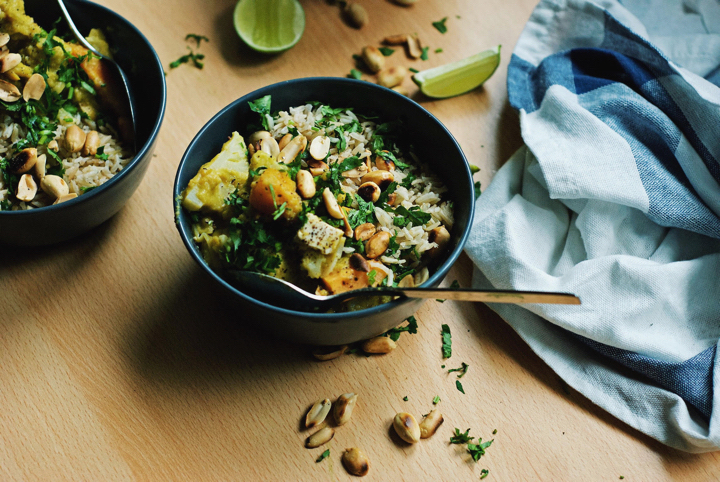
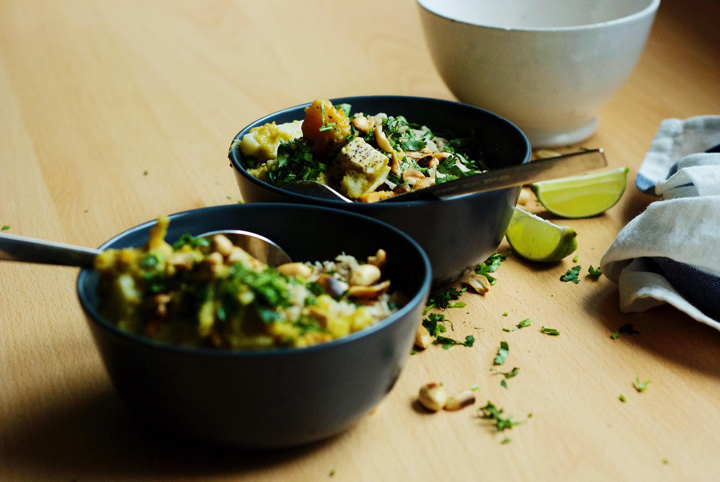
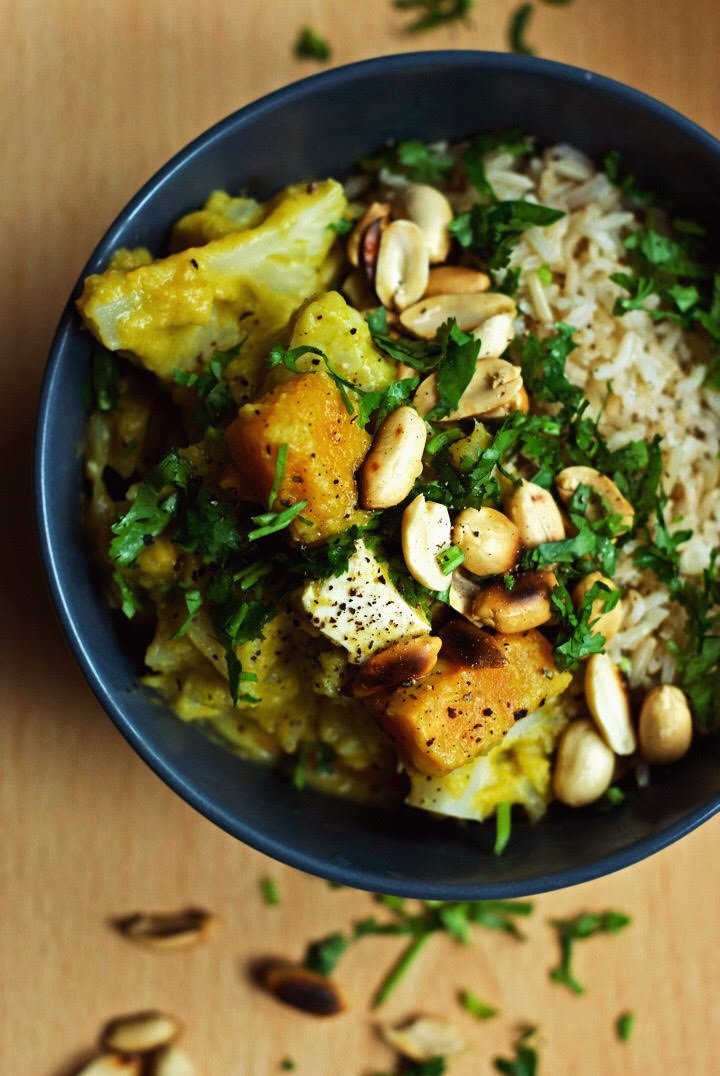
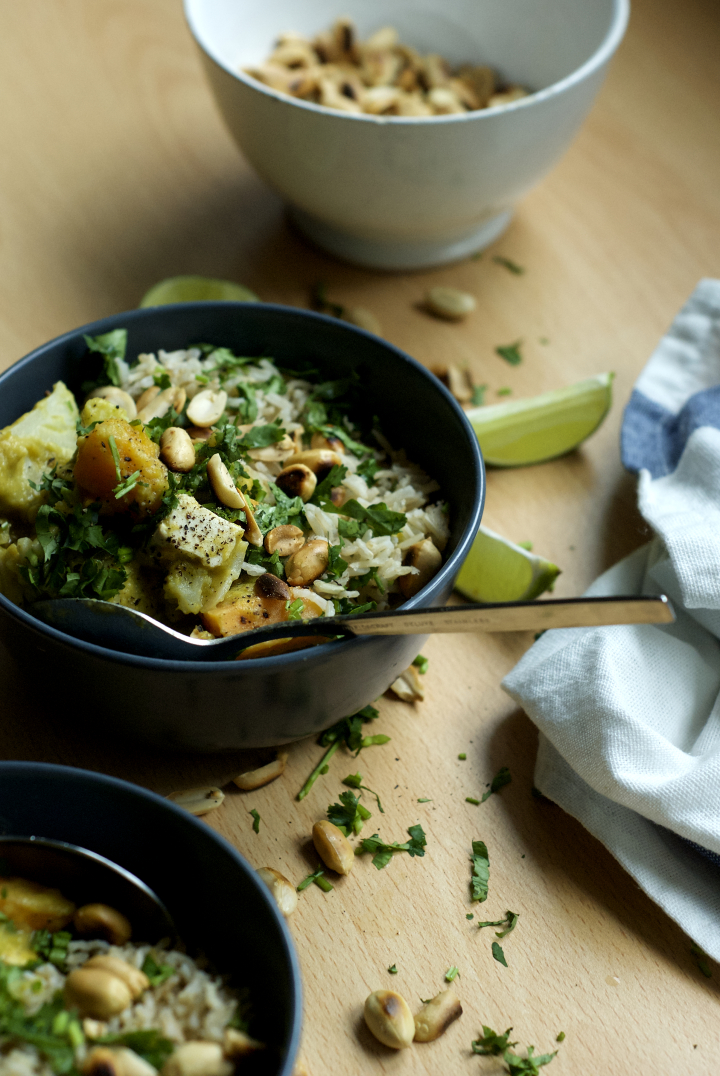
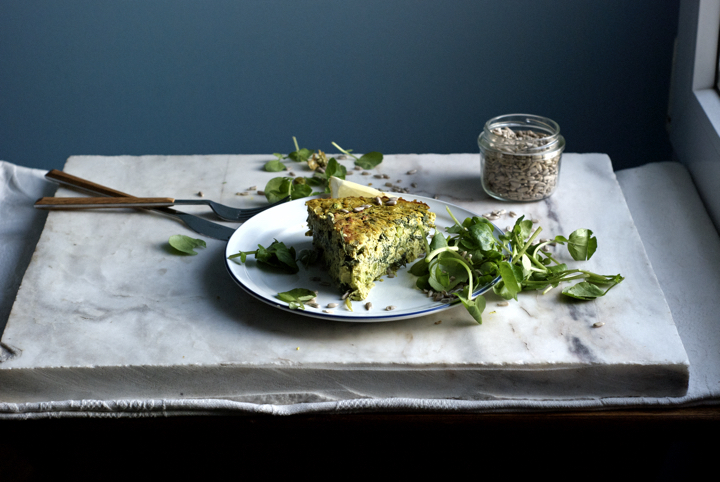
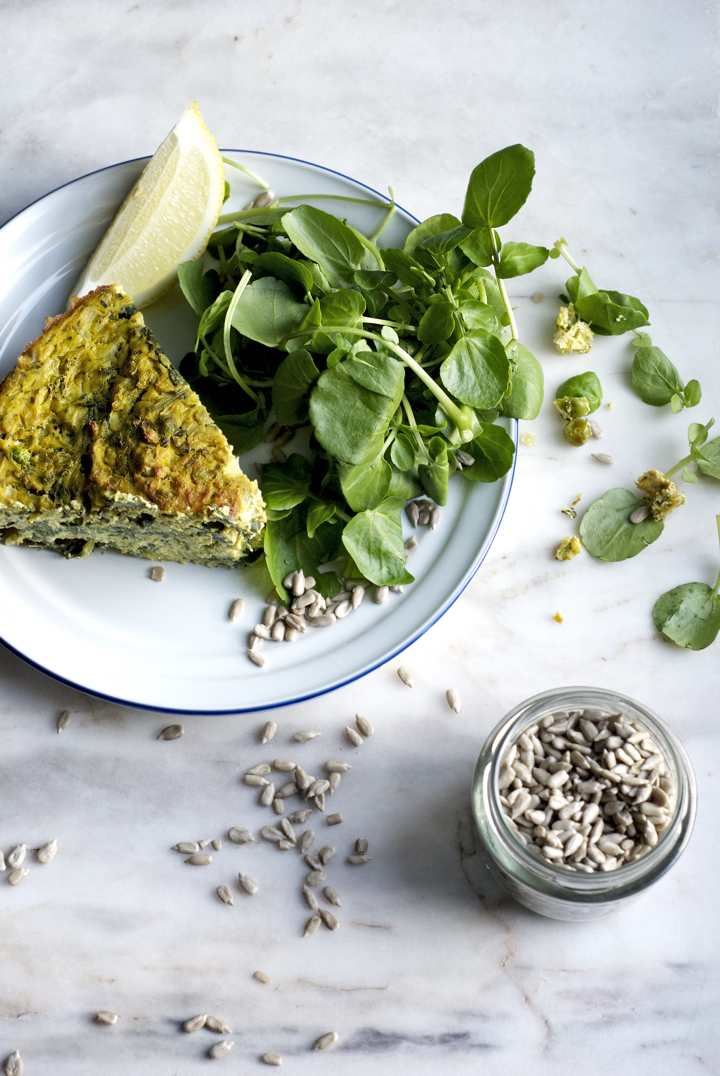
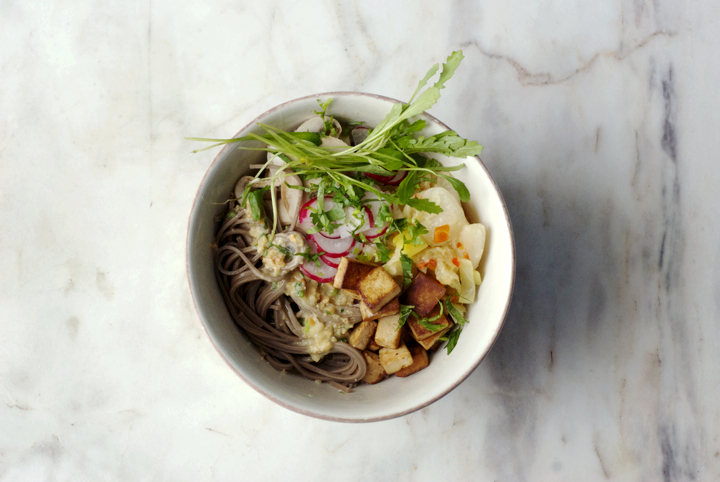
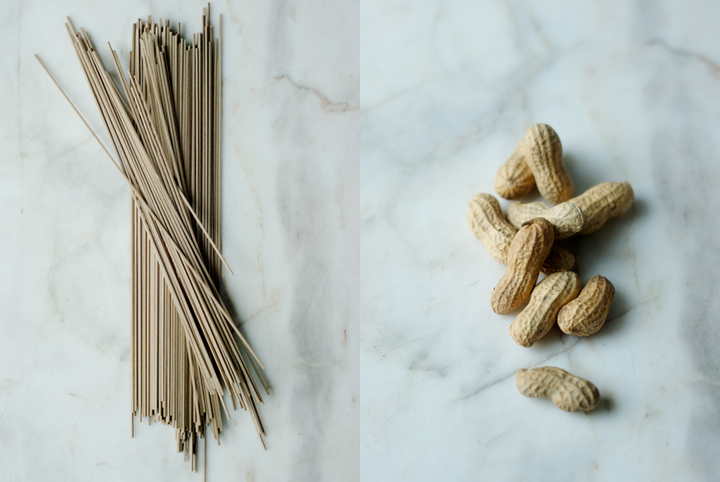
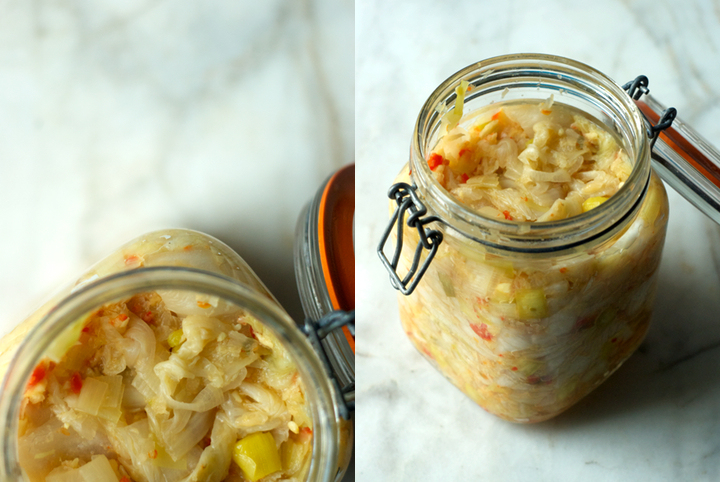
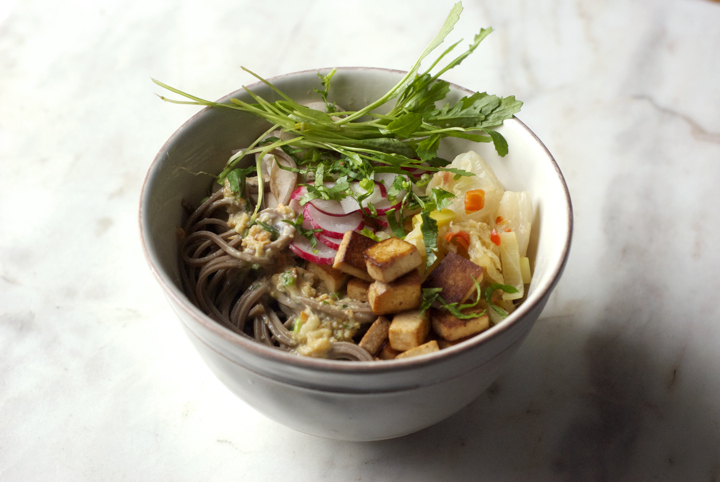
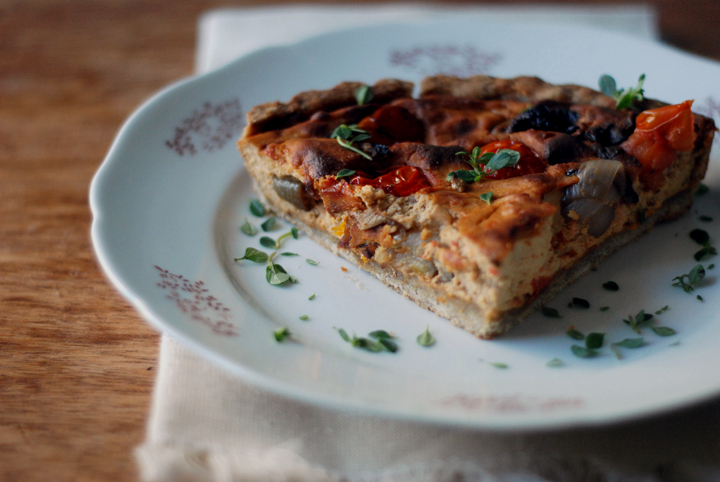

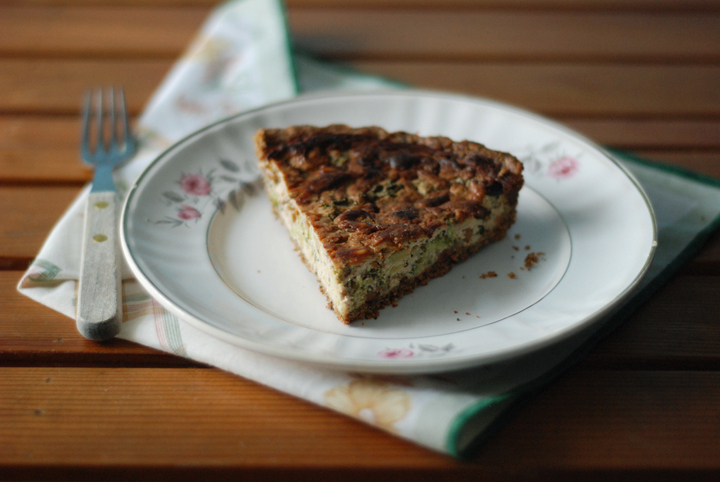
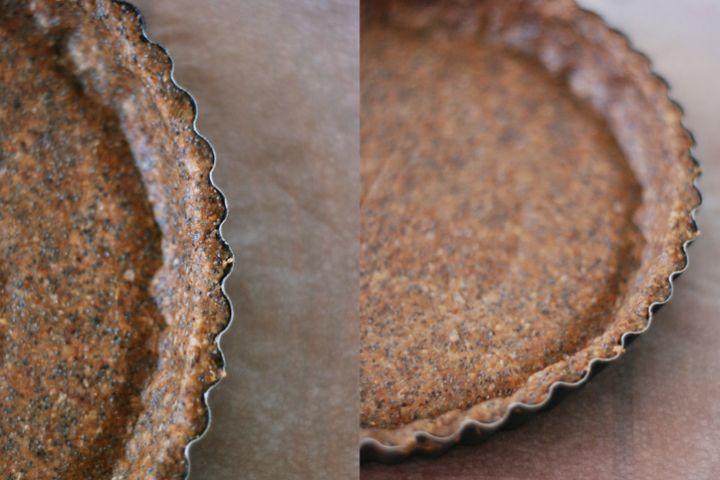
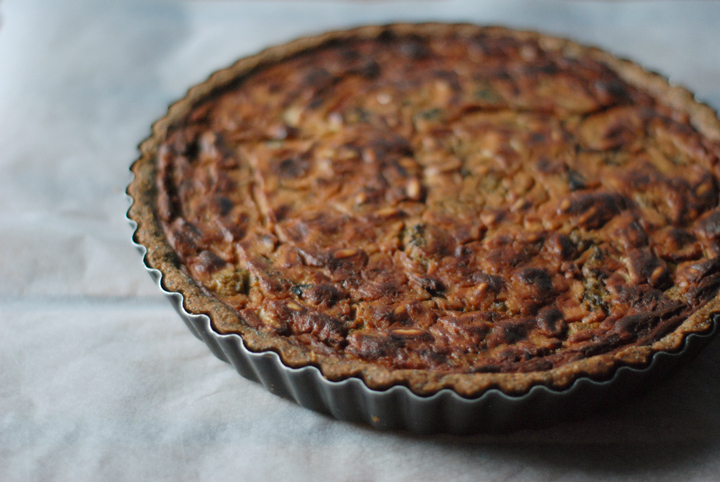
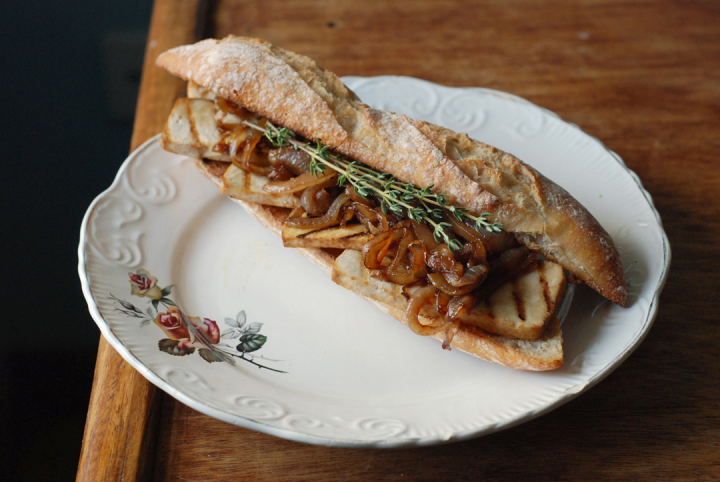
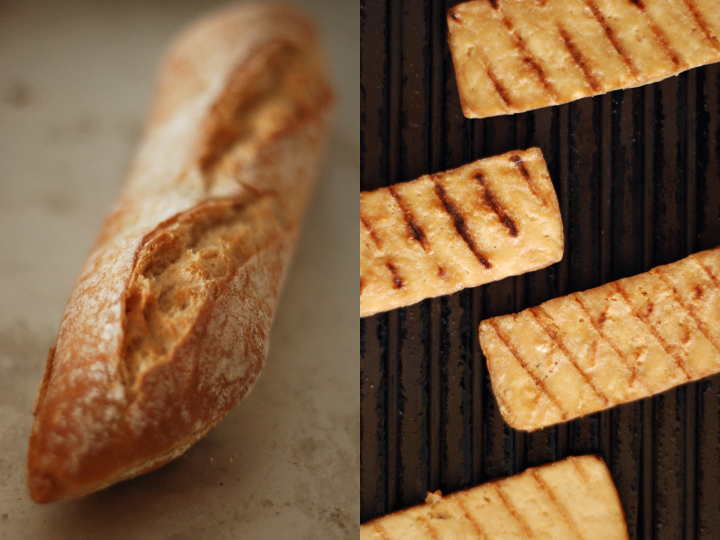
4 comments